Germany developed a large series of halftrack vehicles on the eve of WWII from the Sd.Kfz.2 motorcycle to the enormous 18 ton Sd.Kfz.9. All of them (except for the smallest) were used as chassis for SPGs. The Sd.Kfz.10/4, a 20 mm AA gun on the 1 ton Sd.Kfz.10 tractor, became the most common one.
Demag received an order for a 1 ton tractor (the number indicates the weight of a trailer it could pull) ni 1933. Five prototypes equipped with 1.5-2 L engines from BMW cars were built in 1934-1936, but they were all too weak. Only the D6 model with an 83 hp 3.8 L Maybach NL 38TRK was built in a small batch. Its successor, the D7, became a truly mass produced variant. Initially it used the 90 hp NL 38TRKM engine and as of the end of 1939 it used the 100 hp 6 cylinder Maybach 42 4.2 L engine. The transmission was a semiautomatic Maybach Variorex with 7 gears forward and 3 reverse. A mechanical transmission was installed as of 1943. The Sd.Kfz.10 had 10 road wheels per side (3 doubled and 2 single) with a torsion bar suspension.
Seven companies built a total of 9240 Sd.Kfz.10 tractors (including Sd.Kfz.252 and 253 chassis but not including Sd.Kfz.250 chassis) until production ended in December of 1943. Initially, the tractors were meant only for towing light artillery pieces like the 3.7 cm Pak or 20 mm AA gun. Production of the Sd.Kfz.10 Ausf.B with a reinforced rear began in 1940, which allowed it to tow heavier guns like the Pak 40 or 105 mm leFH 18.
Creation and production
The idea of putting the 20 mm gun on a halftrack platform came up in the earliest stages of Sd.Kfz.10 development. This would allow rapid deployment of the AA gun and resolve the issue of covering vehicle columns from air attack.
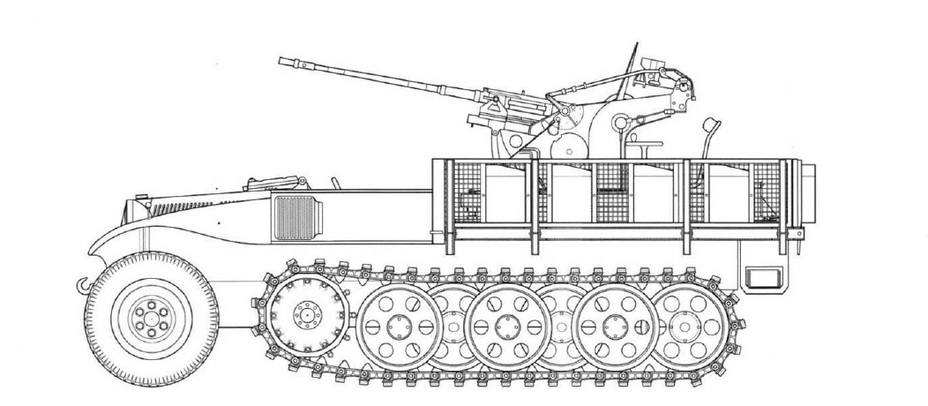
An experimental SPAAG on the chassis of the D II 3, one of the Sd.Kfz.10 prototypes, was built in 1938. A 20 mm Flak 30 AA gun on the stock mounting was put on the truck bed. The sides were made of metal mesh that could be flipped open and affixed horizontally to make the crew's job easier. Proving grounds trials were successful, and mass production of the Sd.Kfz.10/4 on the mass production D7 chassis began on that same year.
The first order for 370 units (195 for the ground forces and 175 for the Luftwaffe) was finished by July 1939. According to Jentz, another order for 1000 Sd.Kfz.10/4 for the ground forces and 225 for the Luftwaffe was completed in 1940. Production remained at a rate of 20-25 per month until March of 1942. 962 Sd.Kfz.10/5 with the 20 mm Flak 38 gun were built in 1943-44.
Design
The running gear and engine were the same as on the Sd.Kfz.10. The design of the front hull and cabin was also the same, with the exception of racks for the crew's Mauser carbines on the fenders. The changes to the truck bed were the most significant. The rear and sides were made from metal girders covered with a metal mesh. They were flipped down during battle.
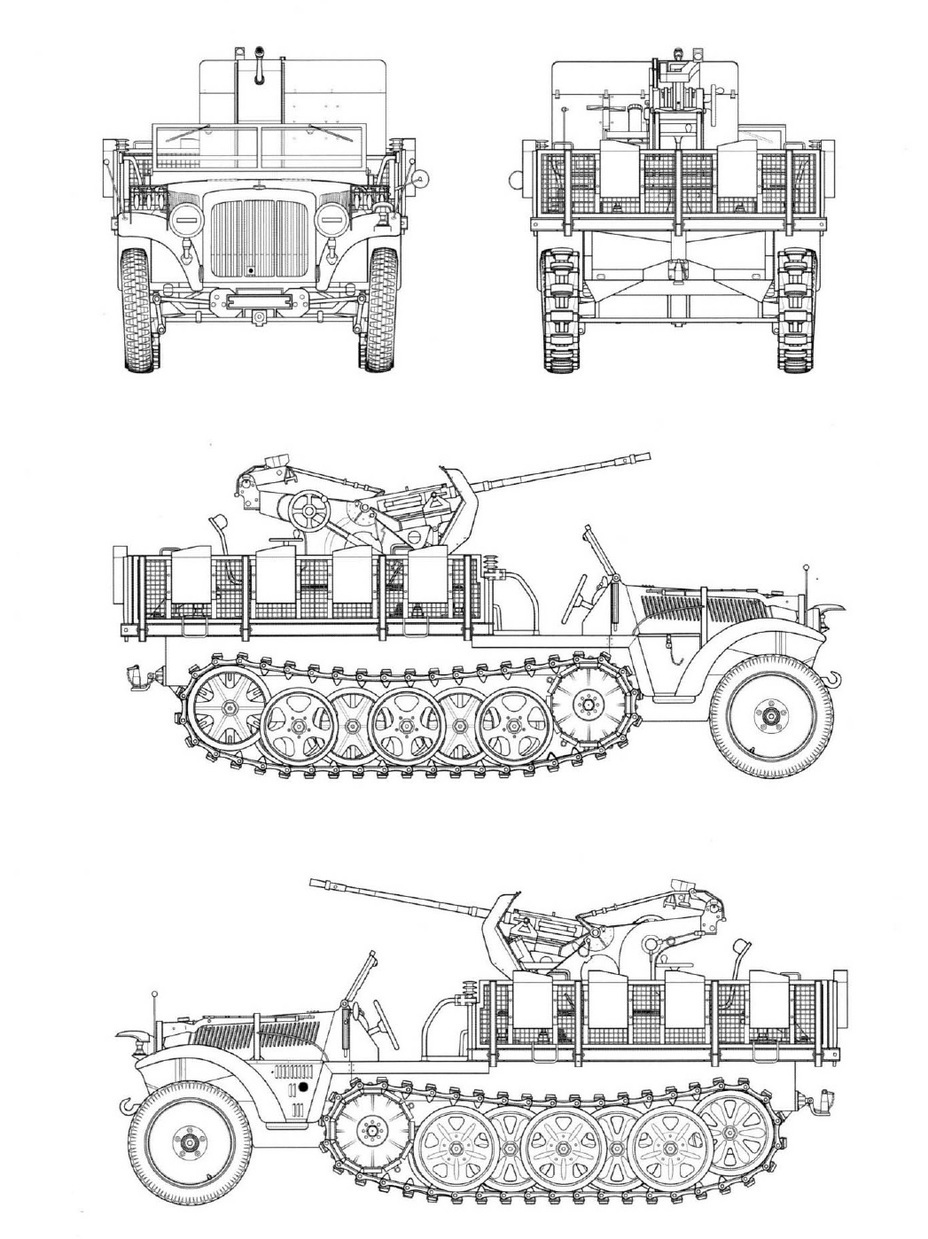
The SPG was armed with the 20 mm Flak 30 AA gun (Flak 38 after 1941) installed on the truck bed on its stock carriage: a triangular mounting with three trails. Initially the gun could be removed or installed by the crew. Special rails were installed for this purpose and two pulley tackles were installed in the front. It took five men to raise the gun on the platform: four pulled on two ropes attached to the pulleys, one more pushed the gun. A well trained crew could do this in 20 seconds. However, these features were later removed, as practice showed that it was not necessary to remove the gun very often.
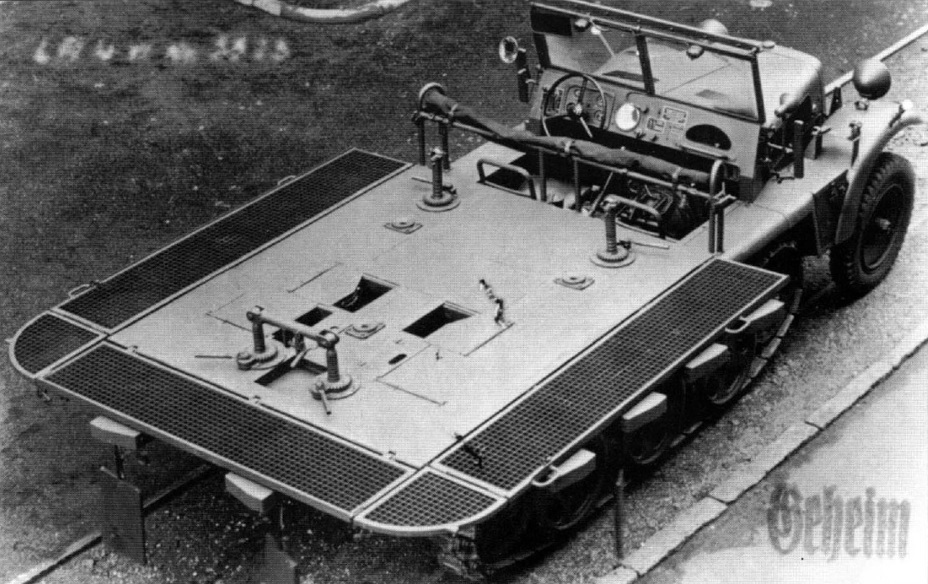
The AA guns were fed from 20 round magazines. 260 rounds of ammunition was carried on board, located in containers along the sides of the platform. The SPAAG could also tow a Sd.Anh.51 700 kg trailer (this was also used as a limber for Flak 30 and Flak 38 guns) that held 640 more rounds of ammunition. There were also other types of single axle trailers used, for instance the 585 kg Sd.Anh.53 used in AA artillery and Sd.Anh.32 initially developed to transport 37 mm anti-tank gun ammunition.
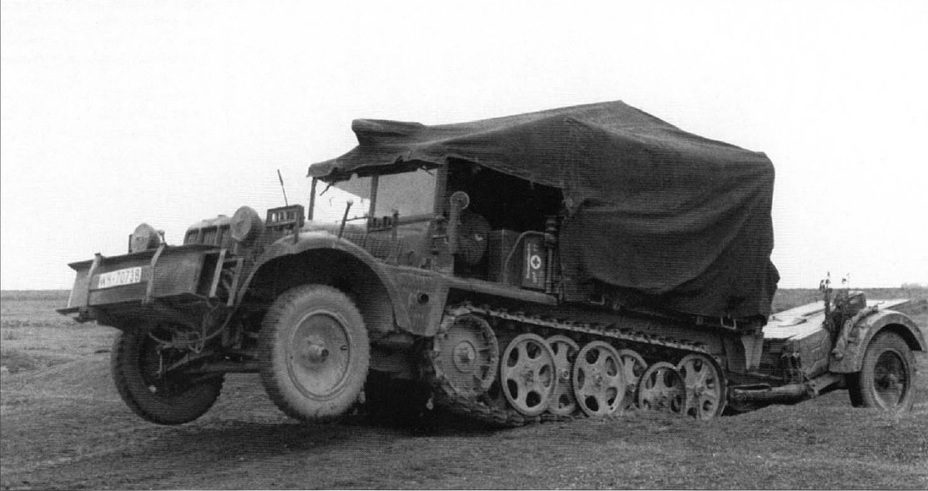
A number of late production Sd.Kfz.10/5 SPAAGs received partial armour in the form of 8 mm thick armored plates covering the radiator and the driver's cabin from the front.
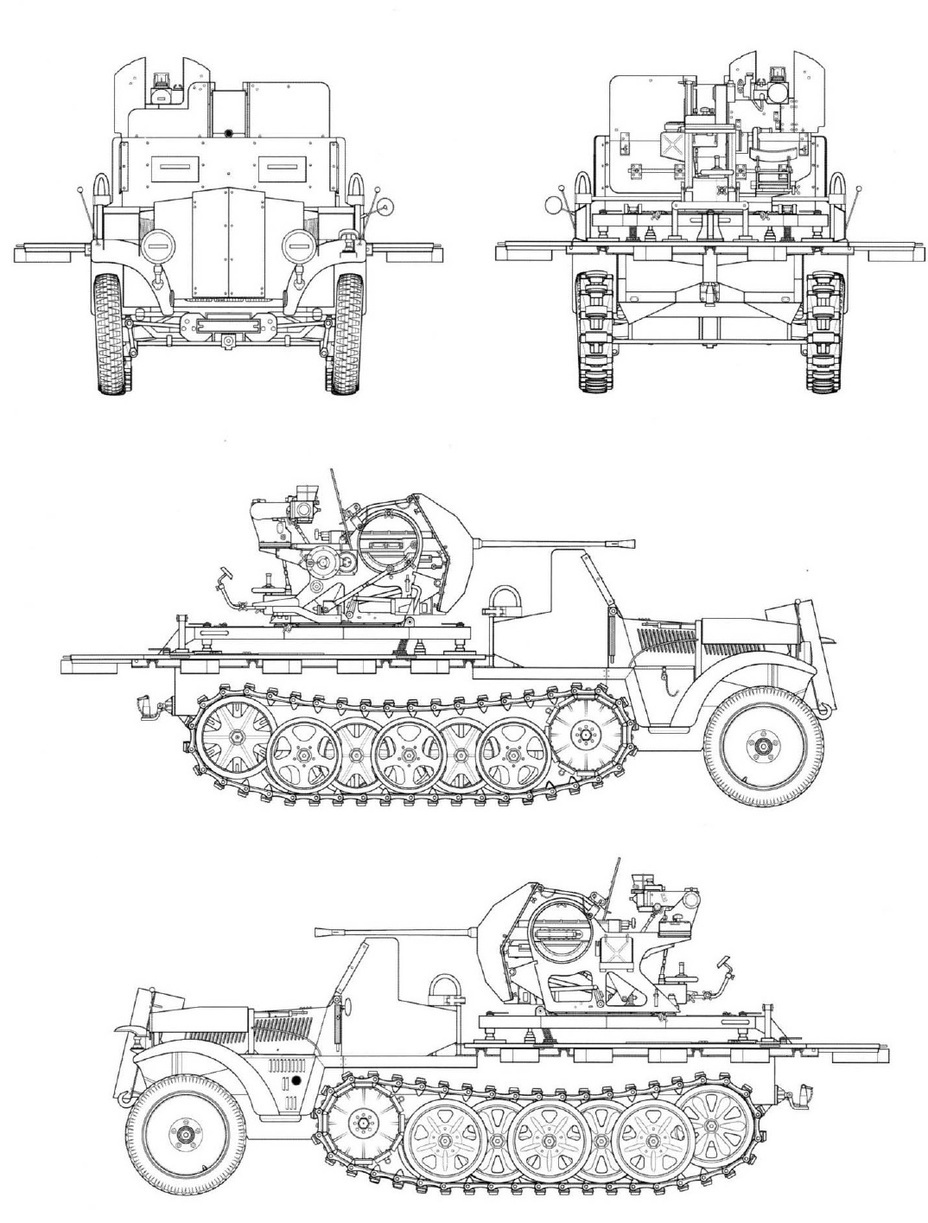
Table of organization
The main type of unit to use the halftrack SPGs was the light SPAAG company (Leichte Fliegerabwehr Kompanie Selbstfahrlafette). The TO&E of this company, K.St.N 192, authorized the following:
- HQ (1-2 Kfz.15 cars and 4 motorcycles)
- Signals section (1 Kfz.15 with telephone equipment and 4 Kfz.2 with radios)
- A type platoon: towed AA guns
- HQ (3 Kfz.15 cars and 2 motorcycles)
- Supply section (2 Kfz.81 cars with trailers)
- Fire section (4 Flak 3 or Flak 38 guns, 4 Kfz.81 cars)
- B type platoon: self propelled guns
- HQ (1 Kfz.15 car and 4 motorcycles)
- Supply section (2 Sd.Kfz.10 tractors with Sd.Anh.51 trailers)
- Fire section (4 Sd.Kfz.10/4 SPAAGs and 2 Sd.Anh.51 trailers)
- C type platoon: self propelled guns
- HQ (3 Kfz.15 cars and 2 motorcycles)
- Supply section (2 Sd.Kfz.7 tractors with Sd.Anh.54 trailers)
- Fire section (2 quad Sd.Kfz.7/1 SPAAGs and 2 Sd.Anh.54 trailers)
The company structure was not rigid. Platoons could be combined in various ways. For instance, out of the 51 light SPAAG companies allocated for Operation Barbarossa only 10 had the normal organization (one of each kind of platoon). The others had the following structure:
- 10 companies of one A type platoon and one B type platoons
- 8 companies of two B type platoons and one C type platoon
- 23 companies of three B type platoons
Out of 153 fire sections across the 51 companies 20 were equipped with towed guns, 18 with the Sd.Kfz.7/1 SPAAG, and the remaining 153 with the Sd.Kfz.10/4 SPAAGs.
Light SPAAG companies were combined into AA battalions (6 companies) but these were merely administrative units. Tactically, each company was subordinate to a division (usually tank divisions, but rarely motorized or infantry divisions) or corps. As of June 22nd, 1941, 17 of these companies were attached to tank divisions, 4 to motorized divisions, 2 to infantry divisions, 15 to corps, and the remaining 19 were in reserves of armies, tank groups, or army groups.
In addition to companies attached to divisions, the Sd.Kfz.10/4 SPAAG was used in reserve AA battalions. The Wehrmacht had 13 such battalions by the end of 1942, 10 of which were self propelled. Each battalion included 4 companies, but their structure differed. Four battalions had companies with three B type platoons, six had two B type and one C type.
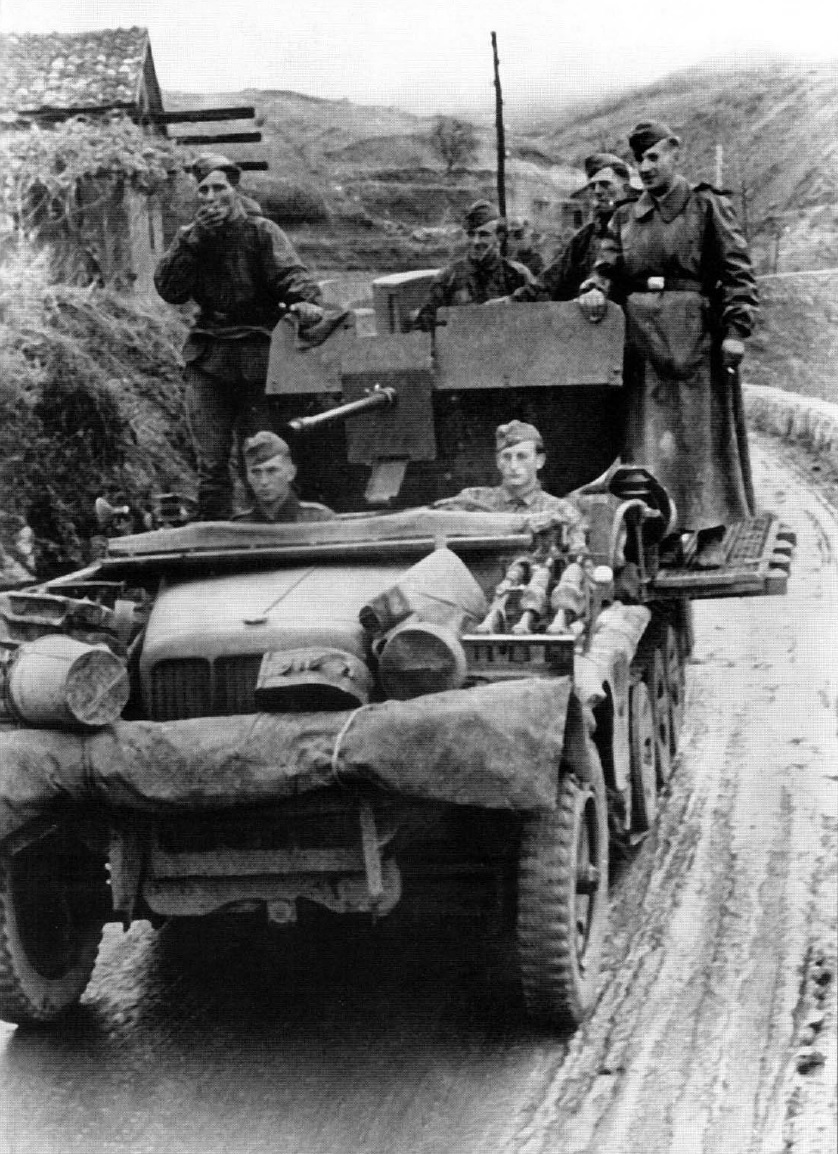
Use in combat
12 companies with the Sd.Kfz.10/4 were used in the Polish campaign. They were attached to each light division (1st through 4th), to some tank divisions (1st, 3rd, 4th, and Kempf), and motorized divisions (2nd, 13th, 20th, 29th). A significantly larger number of these units were used in the campaign in the West in 1940. They were now present not only with divisions, but also with corps and armies. In Poland, France (and later the Balkans) the AA gunners weren't too preoccupied with their primary duties. It quickly turned out that the fast and agile SPAAGs have another use: direct infantry support. The presence of armour piercing ammunition (the Flak 30 and 38 shared ammunition with the KwK 30 and 38 tank guns) also made them useful against lightly armoured targets.

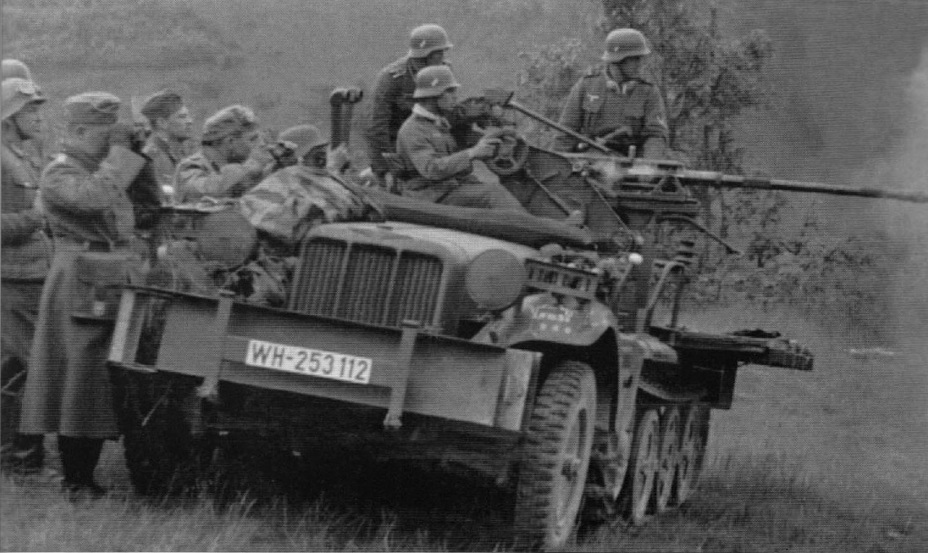
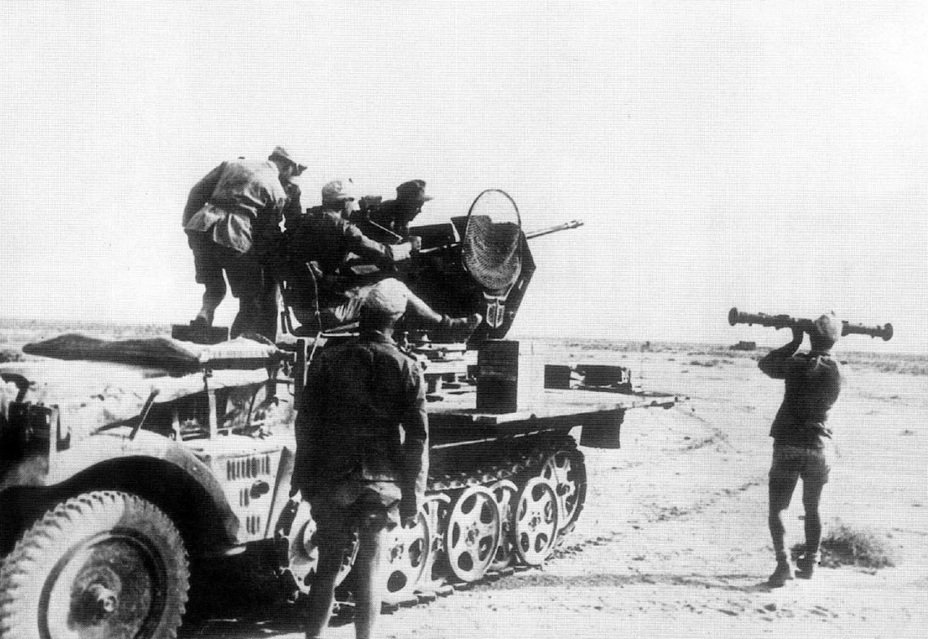
The Sd.Kfz.10/4 (and later 10/5) were first used en masse on the Eastern Front. Here the threat from the air was much more significant than in previous campaigns. This led to organizational changes. A permanent AA company was attached to tank divisions in 1942. This company had 8 SPAAGs: two Sd.Kfz.6/2 (37 mm Flak 36 on a 5 ton halftrack chassis) and six Sd.Kfz.10/4.
Divisions of other types had to deal with temporary attachments. Organic AA units were introduced in four motorized divisions (3rd, 16th, 29th, 60th) only in 1943. These divisions were destroyed at Stalingrad, and their resurrection was a propaganda move as much as a military one. Because of this, special attention was paid to their equipment. Each of the two motorized regiments in these divisions received one company with 12 20 mm AA guns. One regiment per division had SPAAGs, the other had towed guns. This wasn't it: each artillery regiment in these divisions received a fourth AA battalion (all towed guns). Other motorized (Panzergrenadier) divisions remained without organic AA assets until the summer of 1944.
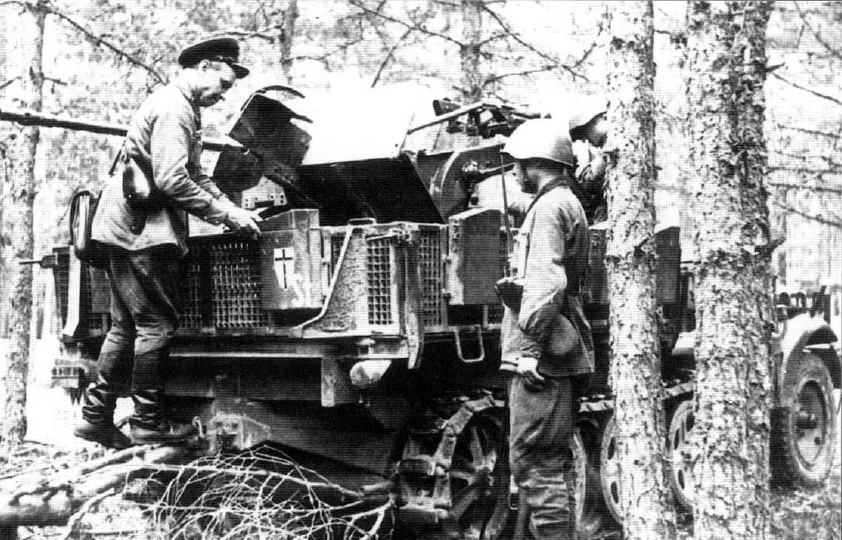
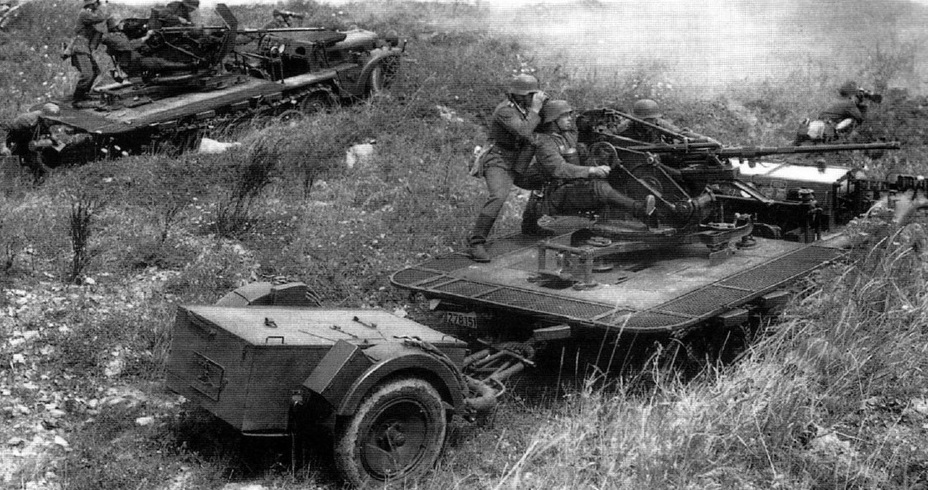
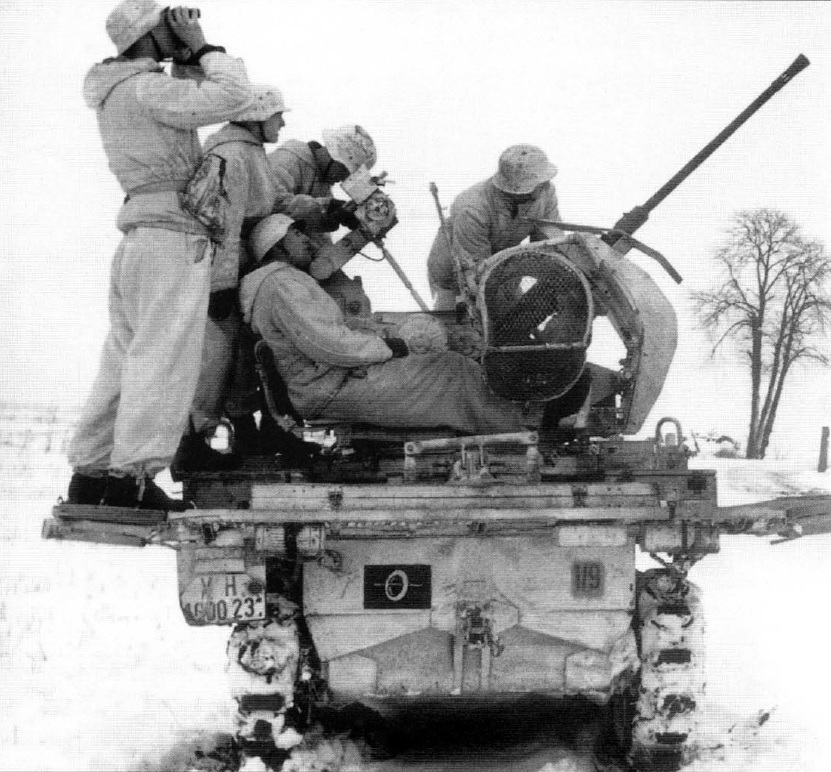
SS Panzergrenadier and tank divisions had much more powerful AA assets than the Wehrmacht did. Their AA battalions were reinforced and 20 mm SPAAGs were moved down to the regimental level. Panzergrenadier regiments had an AA company with a dozen Sd.Kfz.10/4 each. Four of these SPAAGs were assigned to the HQ guard company. An SS tank division was authorized to contain 28 Sd.Kfz.10/4 SPAAGs as of 1943.
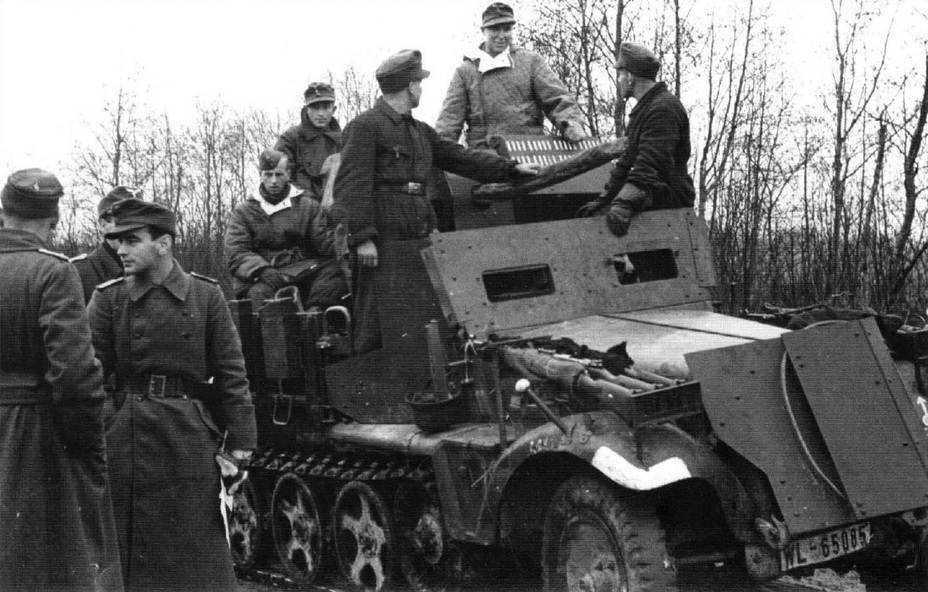
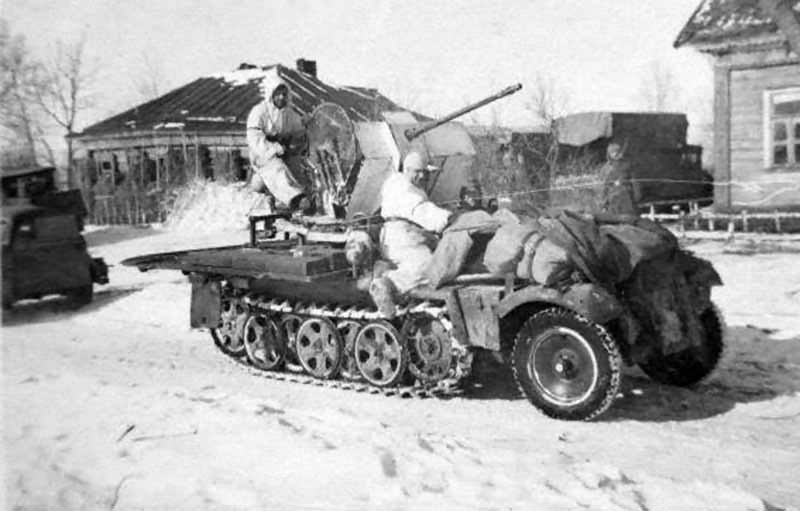
The Flakpanzer 38(t) and later the Flakpanzer IV began to arrive in January of 1944, but they never entirely replaced the Sd.Kfz.10/4. Despite significant losses from aircraft, these SPAAGs were encountered on the front lines until Germany's defeat.
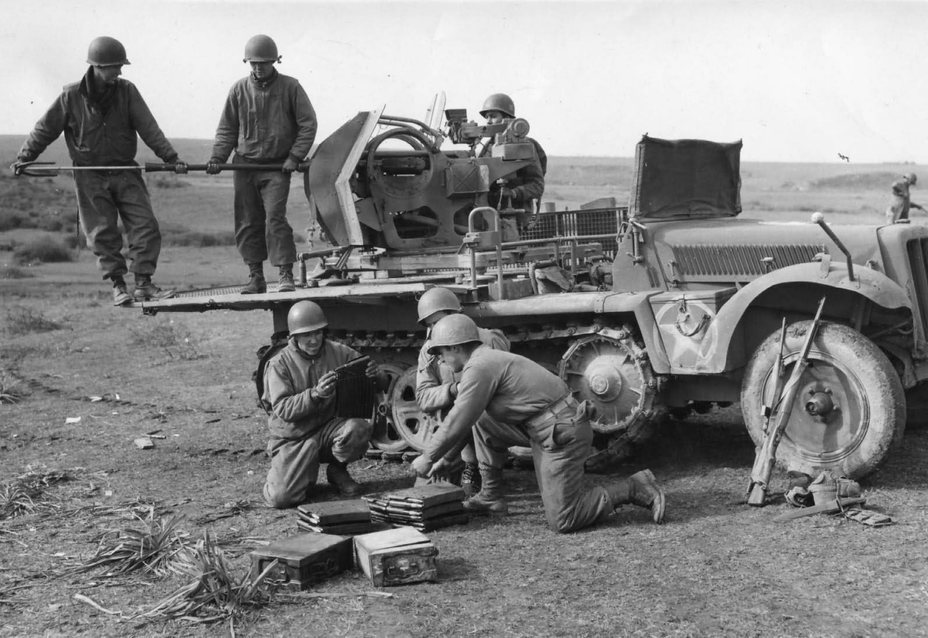
Translated by Peter Samsonov. Read more interesting tank articles on his blog Tank Archives.
Sources:
- Jentz T.L. Flak Selbstfahrlafetten and Flakpanzer – Sd.Kfz.10/4 to 8.8 cm Flak auf VFW. – Darlington Productions, 1998;
- Ledwoch J., Sawicki R. 2 cm Flak 30/38 Sfl Sd Kfz 10/4. – Militaria, 2010;
- Müller W. German 20 mm Flak in World War II. – Schiffer Publ., 1995;
- Müller W. 2-cm FlaK im Einsätz 1935-1945. – Waffen-Arsenal, Band 142.






